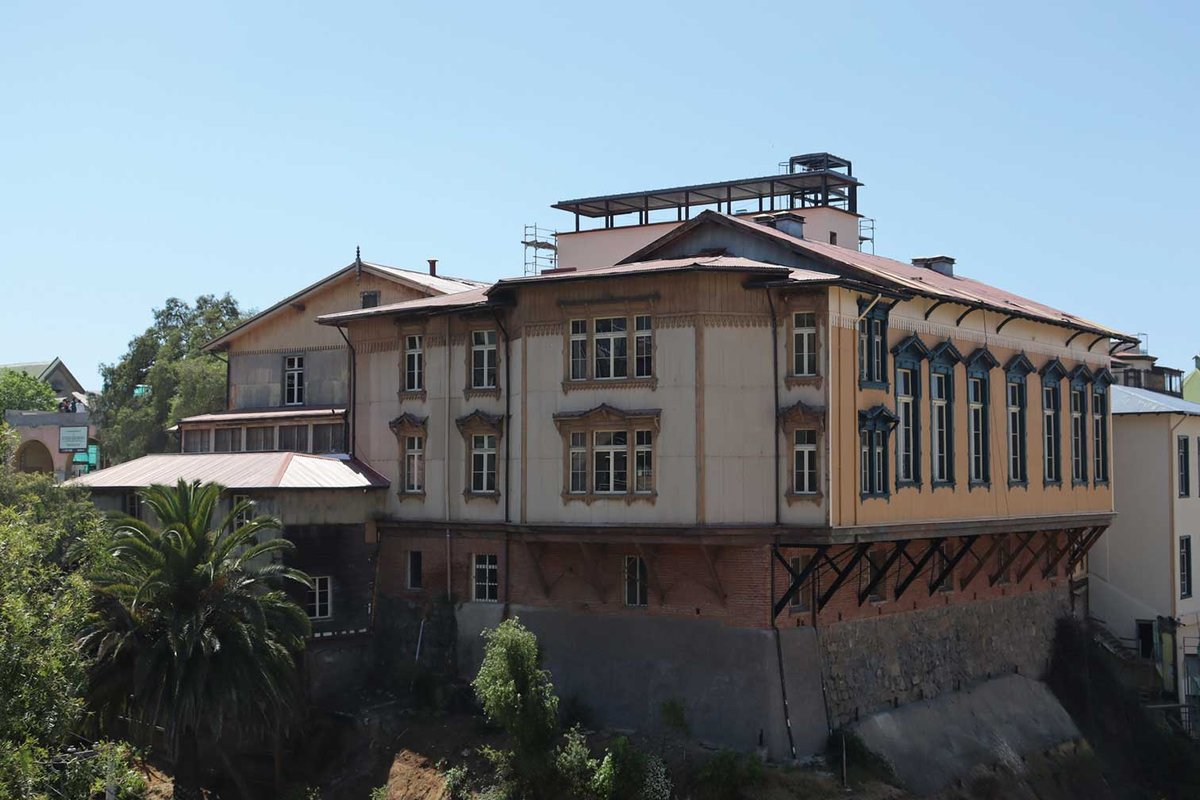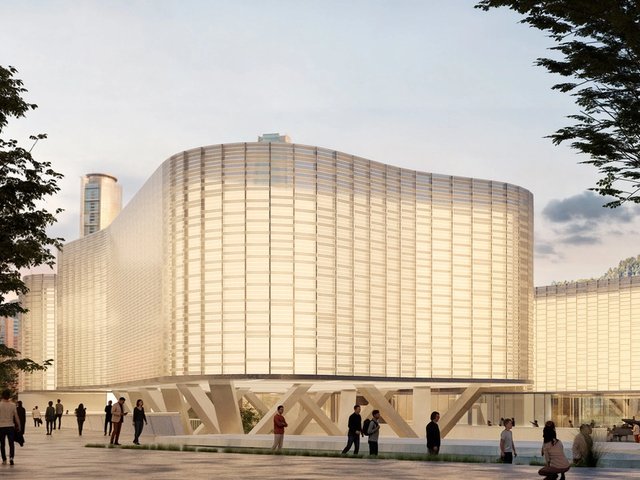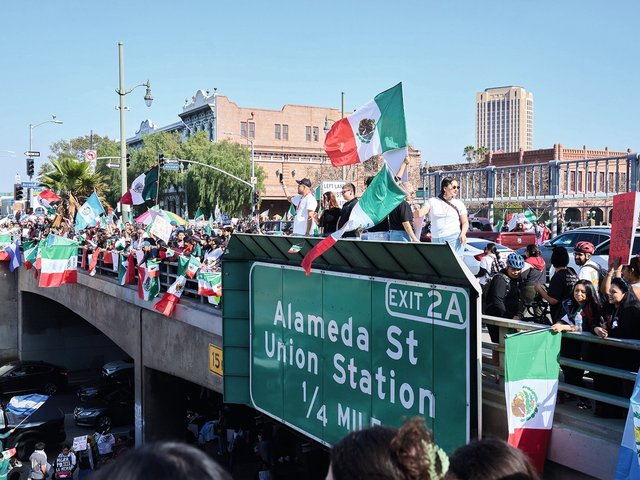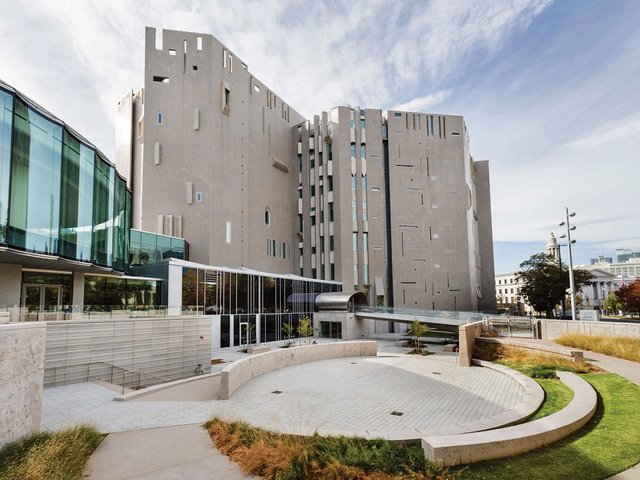Destino Valparaíso, a new museum presenting the history of Chile’s pioneering immigrants, is set to open later this year. The museum will be located in a 135-year-old building formerly used as a German school in the scenic coastal city of Valparaíso. Its founder hopes to bring history to life by integrating technology, performances and culinary experiences into the museum’s programming.
The museum’s official name, Destino Valparaiso—Museo del Inmigrante, is inspired by the dramatic journeys of early immigrants to Chile, who braved treacherous sea voyages in the early 1800s in search of a new home. The city of Valparaíso itself, shaped by their hands, was a destination yet to be built.
“Embarking on this journey was an act of unparalleled bravery,” says Eduardo Dib, a Valparaíso native, owner of a successful furniture business and philanthropist who is spearheading and fully funding the museum project. “These were true pioneers.”
Though himself born to immigrant parents (a Lebanese father and Syrian mother), Dib emphasises that the museum is not about family history or more recent immigration to Chile. “It’s really the story of the establishing of a city, of a country,” he tells The Art Newspaper. “This is what we want to relay to audiences.”
When Spanish colonisers first landed on its shores, the current-day Valparaíso region was home to the Mapudungun-speaking Picunche people. (Unlike the Mapuche, who now make up around 10% of the Chilean population, the Picunche did not survive the colonial era as an independent group.) Later, Valparaíso was a key port for the transatlantic slave trade—although the number of enslaved people arriving there was far lower than on the continent’s Atlantic coast.
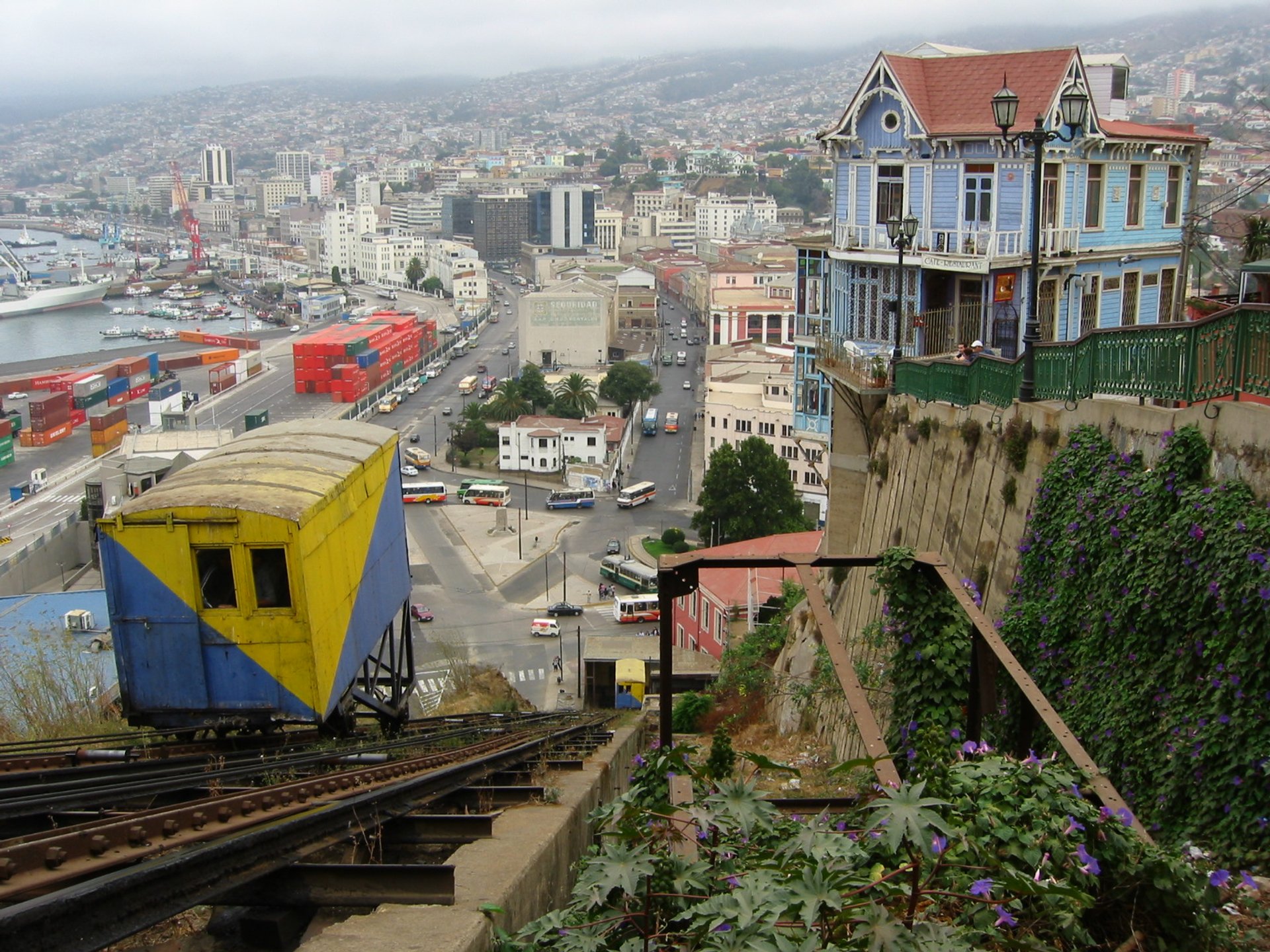
A view of Valparaíso Photo: Paula Soler-Moya via Flickr
In 1811 Valparaíso became a freeport, and British and Spanish migrants arrived in the then-Spanish colony. After the discovery of saltpetre (potassium nitrate) in the north, they were joined by multitudes from Europe and the Middle East. These immigrants made up the backbone of the booming “white gold” saltpetre industry. The influx of immigrants built Valparaíso’s characteristic, labyrinth-like cityscape, with colourful houses, intricate funiculars and elevator systems clinging to the Pacific cliffsides. The city’s bustle and energy are captured in Pablo Neruda’s poem Ode to Valparaíso (1954), which starts with the lines: “Valparaíso / What nonsense / You are / What a crazy / Crazy port.”
“This museum could not exist in any other city,” Dib says. “The French, the Germans, the Italians, the Arabs—they all arrived in Valparaíso. It’s the epicentre of Chile’s pioneering immigrant history.”
Precariously clinging atop one of the city’s many hillsides, the museum will be housed in the historic Colegio Alemán de Valparaíso (German school of
Valparaíso). Originally built in 1890, with several additions constructed later, it was home to the German school until 1988. Various other educational institutions operated there until 2015, when the building was officially designated a cultural landmark. The impressive structure has withstood multiple major earthquakes over the years. Although it retains its original architectural grandeur, the former school has undergone extensive renovations in preparation for its new role as a museum. But while the building was seemingly destined to become a museum, Dib emphasises that his vision for Destino Valparaíso predated his family’s acquisition of the building in 2016.
A multimedia focus
“A building such as this comes with great responsibilities,” Dib says. “When we took over, it was more or less destroyed. We’ve had to demolish and reconstruct considerable areas and restore the rest. Not to mention that we’ve equipped it with elevators, state-of-the-art audiovisual systems and so on, meeting the standards and requirements of a modern building.”
Multimedia exhibitions will be a pillar of Destino Valparaíso’s programming, presenting the country’s immigrant histories through 22 thematic “stations”, with rooms dedicated to specific migrant communities, among them Arab and Spanish. Central to the audience experience will be integrated screens and audio to convey these stories.
“We will not be a traditional collecting museum,” says Dib, who describes the museum’s objects as second to its multimedia material. “It’s much more about telling the histories of the people who built Valparaíso, starting with where they emigrated from. The stories will start in the ports of Europe—such as Genoa, Hamburg, Calais and Liverpool—onto their journeys, arriving in this city, which they themselves started to build, all the way up to the end of the Second World War.”

Eduardo Dib inside the historic Colegio Alemán de Valparaíso building, which he is in the process of converting into an immigration museum Courtesy Destino Valparaíso
The exhibitions will conclude in “the crown jewel of the building—a preserved, German colonial-style theatre hall”, Dib says. “It’s a room that could easily have been in any European city.” The theatre, partially restored, features original coats of arms representing different regions of Germany painted in the upper parts of the room.
Research and curation for Destino Valparaíso has been years in the making. Historical records, artefacts and personal narratives have been meticulously gathered to provide a comprehensive account of Chile’s early history of immigration.
“We have no other museum about immigration in Chile, and Valparaíso has no museum about its own city history,” Dib says. “We are filling a need and doing so within the walls of key cultural heritage.”
With approximately 1,800 sq. m of the old school building to be used for permanent exhibitions, 3,200 sq. m will be dedicated to Destino Valparaíso’s mission in other ways. “It’s much more than a museum,” says Dib, noting that the building will contain “a bakery invoking the flavours of Central Europe, a German beer hall, an Italian restaurant”. It will also have shops where visitors can buy sweets and souvenirs relevant to the era of early migration to Chile. In addition, the building will have two conference halls and a lookout with a panoramic view of the port city.
“We want people to come and enjoy history as an experience,” Dib says. “To a traditional museum, you might go once, twice. Destino Valparaíso will be a cornerstone of experiences, art, theatre, music, food—all the while, engaging visitors with the history of immigration.”


